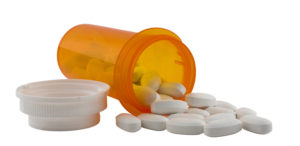 Stop drinking soda every day! Research finds that a daily sugar-sweetened beverage habit may increase the risk for non-alcoholic fatty liver disease (NAFLD). Earlier research has already linked daily sugar-sweetened beverages (typically soda) to type 2 diabetes and cardiovascular disease. And try to avoid high-fructose corn syrup in general (found in many highly processed foods) . From Medical Xpress:
Stop drinking soda every day! Research finds that a daily sugar-sweetened beverage habit may increase the risk for non-alcoholic fatty liver disease (NAFLD). Earlier research has already linked daily sugar-sweetened beverages (typically soda) to type 2 diabetes and cardiovascular disease. And try to avoid high-fructose corn syrup in general (found in many highly processed foods) . From Medical Xpress:
Daily sugar-sweetened beverage habit linked to non-alcoholic fatty liver disease
A daily sugar-sweetened beverage habit may increase the risk for non-alcoholic fatty liver disease (NAFLD), researchers from the Jean Mayer USDA Human Nutrition Research Center on Aging (USDA HRNCA) at Tufts University report today in the Journal of Hepatology.
The researchers analyzed 2,634 self-reported dietary questionnaires from mostly Caucasian middle-aged men and women enrolled in the National Heart Lunch and Blood Institute (NHLBI) Framingham Heart Study's Offspring and Third Generation cohorts....The participants underwent a computed tomography (CT) scan to measure the amount of fat in the liver and the authors of the current study used a previously defined cut-point to identify NAFLD. They saw a higher prevalence of NAFLD among people who reported drinking more than one sugar-sweetened beverage per day compared to people who said they drank no sugar-sweetened beverages.
The relationships between sugar-sweetened beverages and NAFLD persisted after the authors accounted for age, sex, body mass index (BMI), and dietary and lifestyle factors such as calorie intake, alcohol, and smoking. In contrast, after accounting for these factors the authors found no association between diet cola and NAFLD.
NAFLD is characterized by an accumulation of fat in the liver cells that is unrelated to alcohol consumption. NAFLD is diagnosed by ultrasounds, CT, MRI, or biopsy, and many of the approximately 25% of Americans with the disease don't experience any symptoms. Being obese or overweight increases the risk for NAFLD and people with NAFLD are at greater risk of developing cardiovascular disease and type 2 diabetes.Sugar-sweetened beverages are a major dietary source of fructose, the sugar that is suspected of increasing risk of NAFLD because of how our bodies process it.


 Another good reason to breastfeed. Exposure to pollutants like nitrogen dioxide and airborne particles can cause negative effects on motor and mental development in infants, but a new study says those effects are countered in babies who are breast-fed for at least 4 months by their mothers. Researchers in Spain began monitoring rural, pregnant women in 2006 and analyzed samples from 638 women and their infants at 15 months. They reported that babies who are breast-fed did not suffer from the potentially harmful developmental impact of PM2.5 (pollution particle matter) and NO2 (nitrogen dioxide). From Science Daily:
Another good reason to breastfeed. Exposure to pollutants like nitrogen dioxide and airborne particles can cause negative effects on motor and mental development in infants, but a new study says those effects are countered in babies who are breast-fed for at least 4 months by their mothers. Researchers in Spain began monitoring rural, pregnant women in 2006 and analyzed samples from 638 women and their infants at 15 months. They reported that babies who are breast-fed did not suffer from the potentially harmful developmental impact of PM2.5 (pollution particle matter) and NO2 (nitrogen dioxide). From Science Daily: Finding out that so many of probiotics currently contain traces of
Finding out that so many of probiotics currently contain traces of  Finding endocrine disrupting chemicals in 2 out of 10 baby teethers, which are supposedly safe products for babies, is disturbing. Unfortunately the study did not give the manufacturers names. There was even an 11th teether made of natural rubber that was found to leach compounds that were "
Finding endocrine disrupting chemicals in 2 out of 10 baby teethers, which are supposedly safe products for babies, is disturbing. Unfortunately the study did not give the manufacturers names. There was even an 11th teether made of natural rubber that was found to leach compounds that were " Controversy exists over whether healthy people should take
Controversy exists over whether healthy people should take  You can deceive yourself by calling yourself "big-boned" or "hefty", but your urine doesn't lie! Researchers found 29 biological markers in urine that are associated with body mass. These biological markers in urine are a "metabolic signature" of obesity. Note: Body mass index (BMI) is a measure of body fat based on height and weight that applies to adult men and women. From Medical Xpress:
You can deceive yourself by calling yourself "big-boned" or "hefty", but your urine doesn't lie! Researchers found 29 biological markers in urine that are associated with body mass. These biological markers in urine are a "metabolic signature" of obesity. Note: Body mass index (BMI) is a measure of body fat based on height and weight that applies to adult men and women. From Medical Xpress: This nice general summary of what scientists know about the microbial community within us was just published by a division of the NIH (National Institutes of Health). Very simple and basic. From the National Institute of General Medical Sciences (NIGMS):
This nice general summary of what scientists know about the microbial community within us was just published by a division of the NIH (National Institutes of Health). Very simple and basic. From the National Institute of General Medical Sciences (NIGMS):